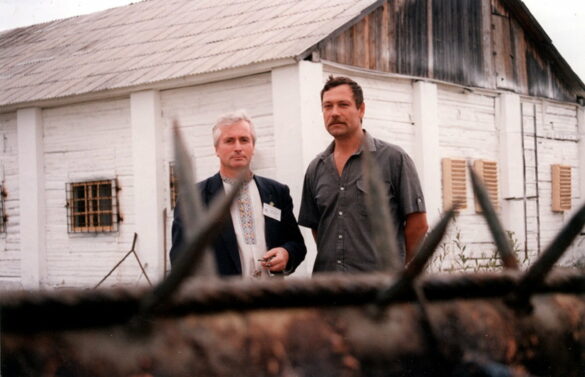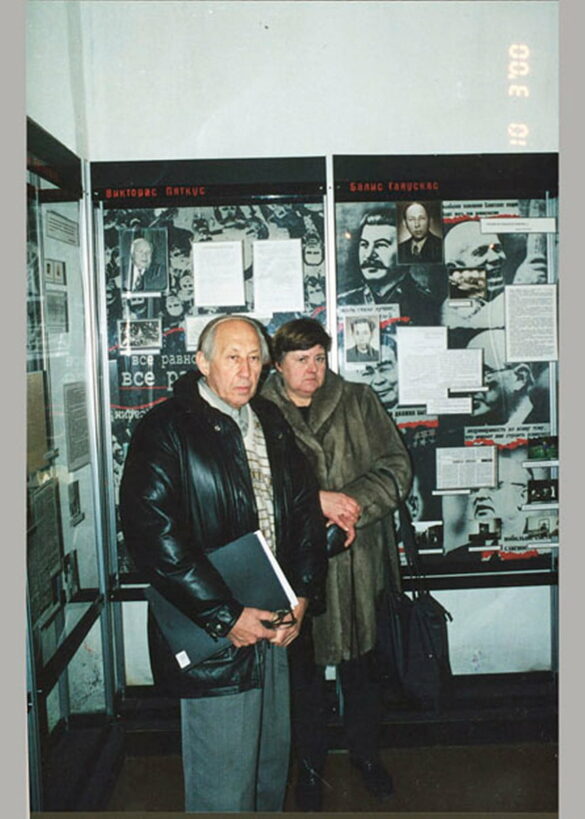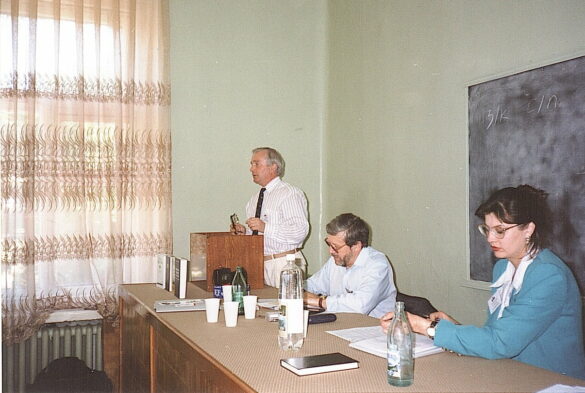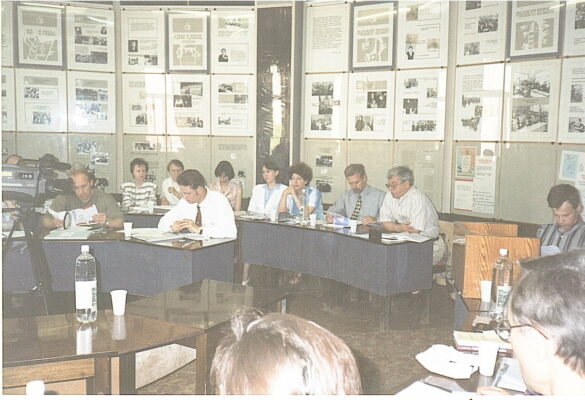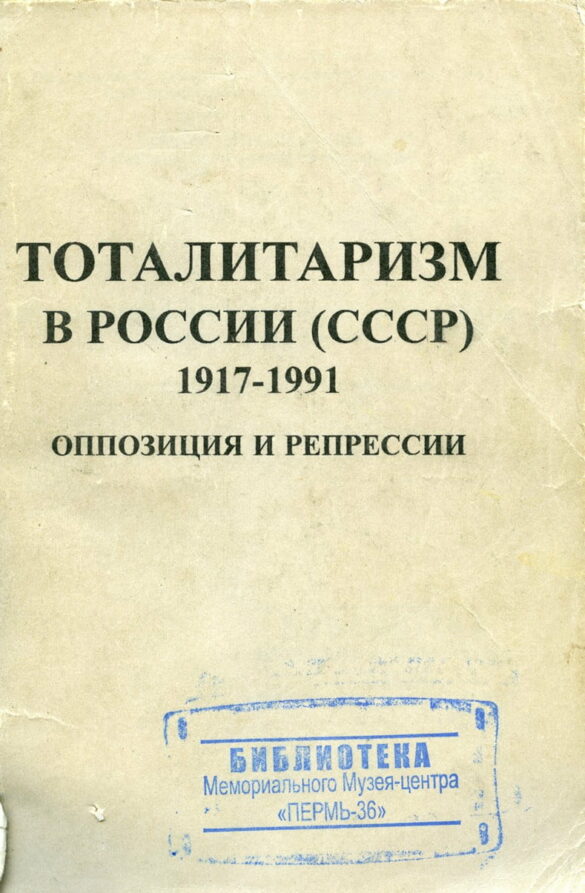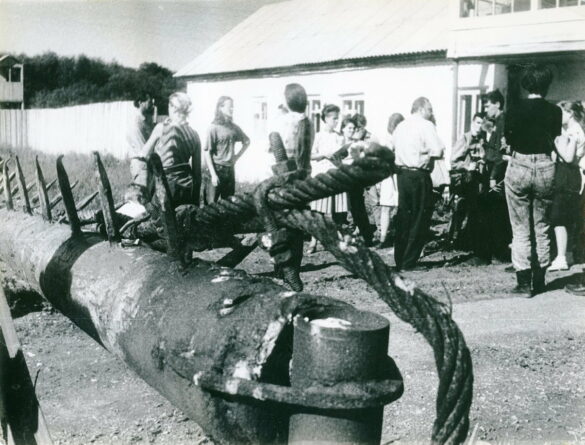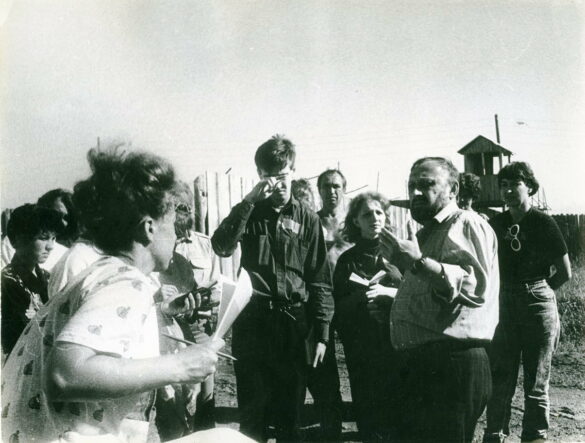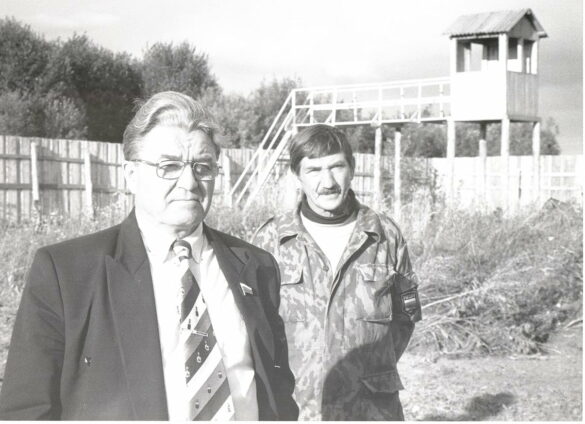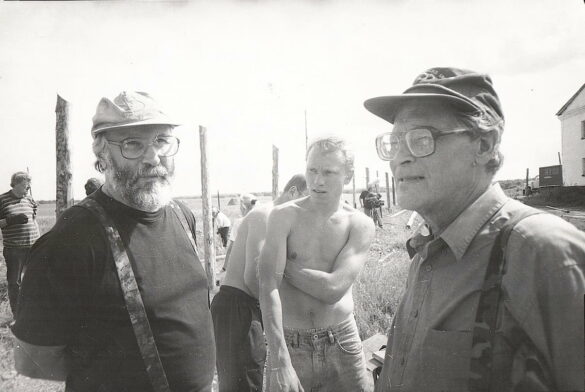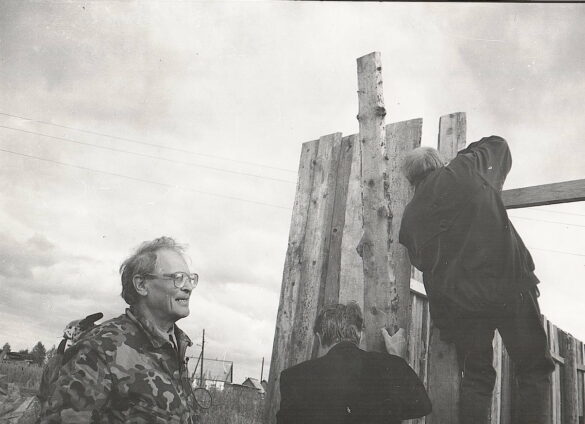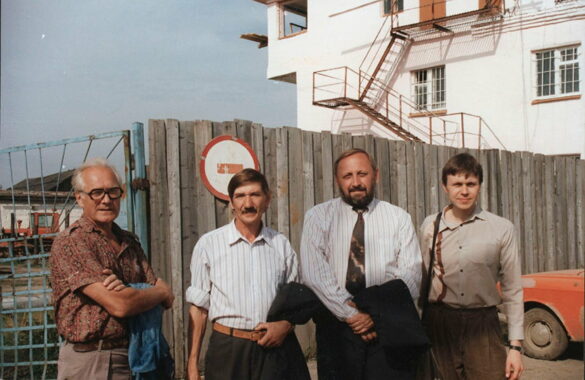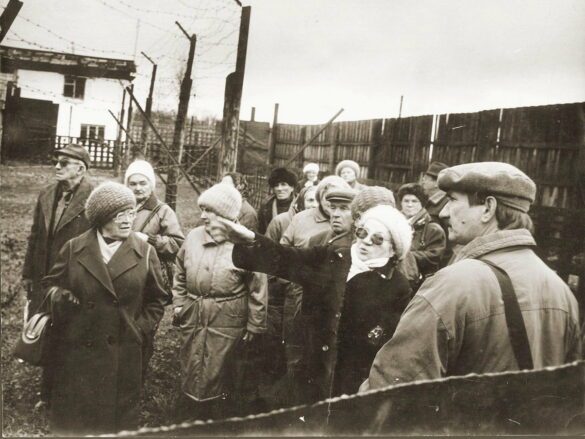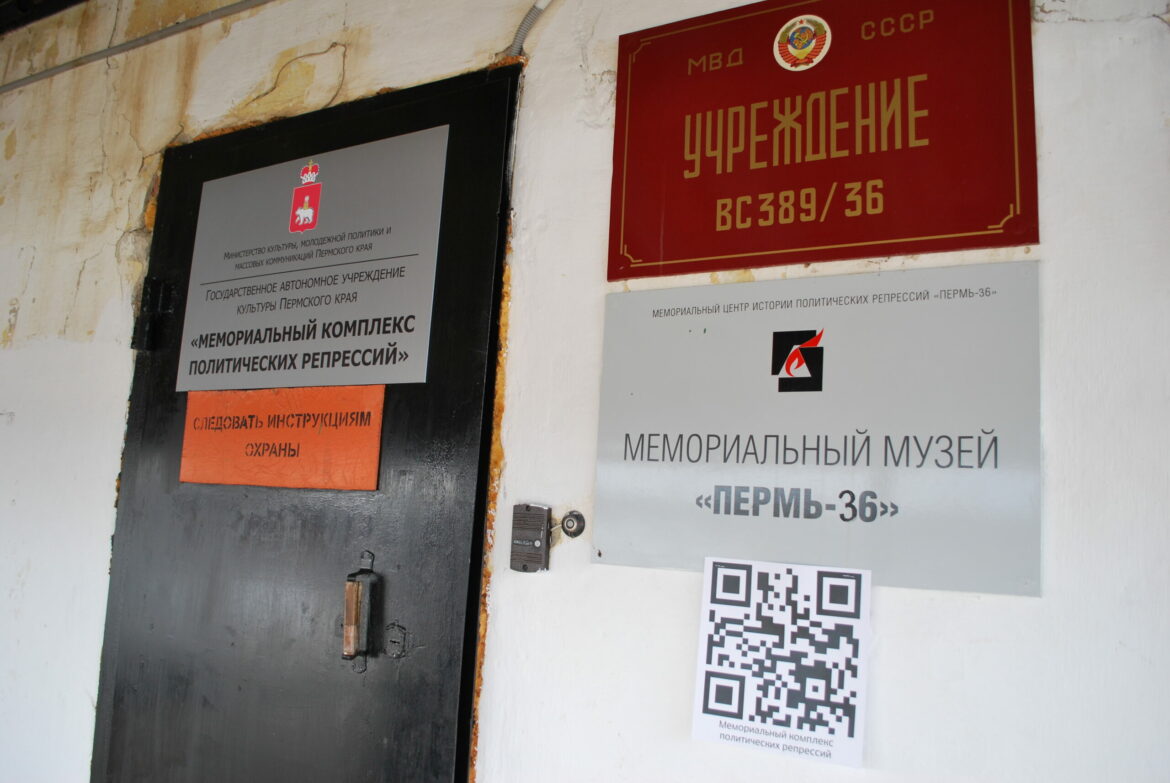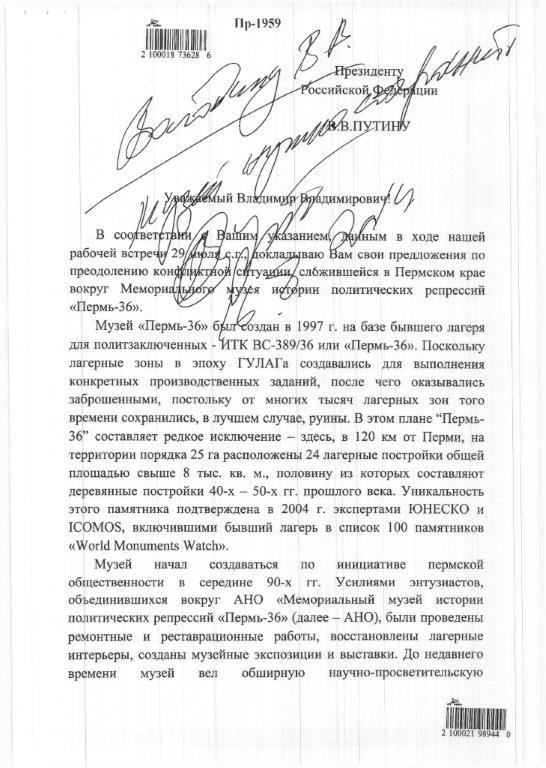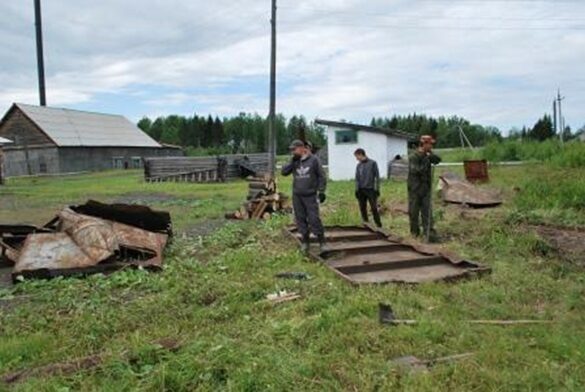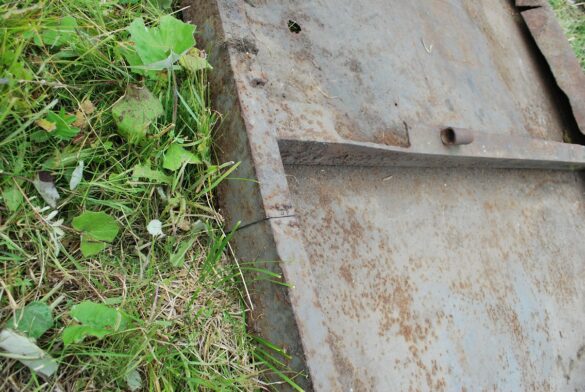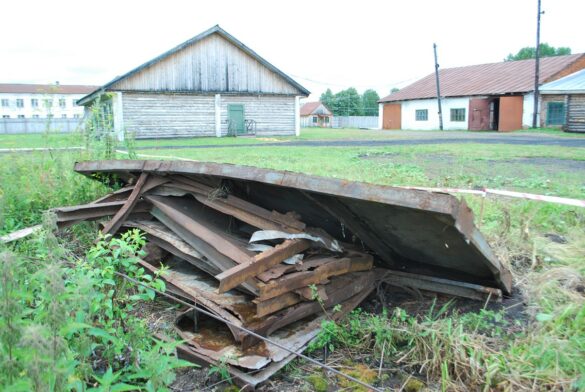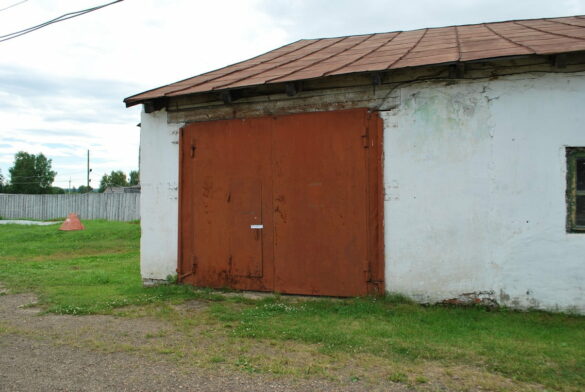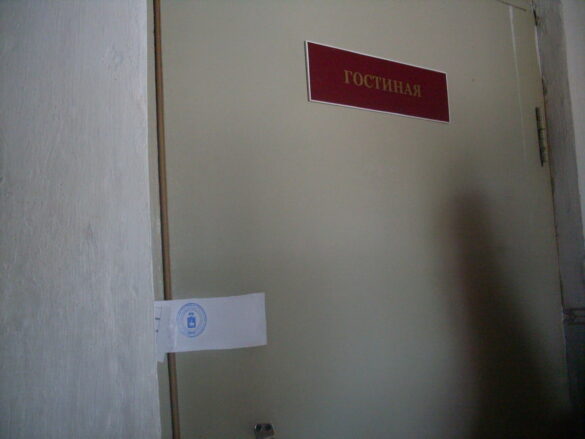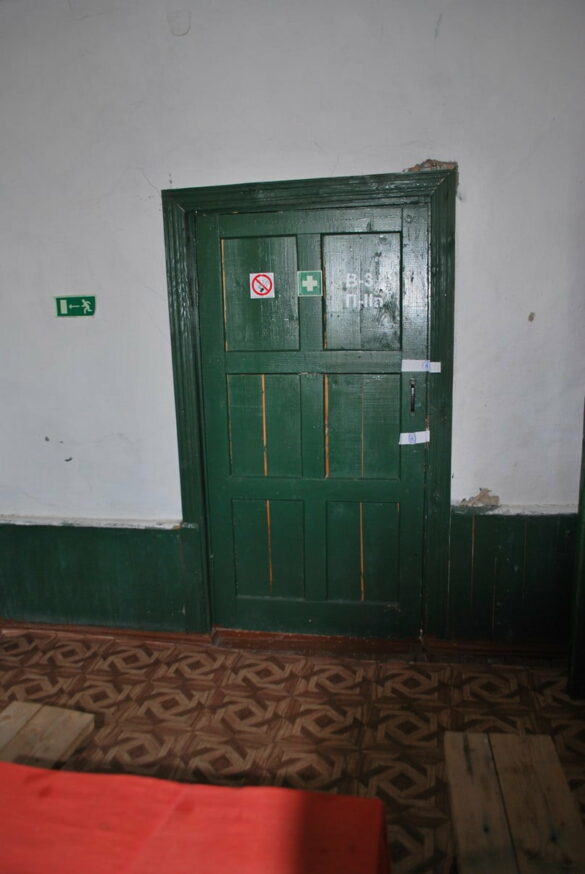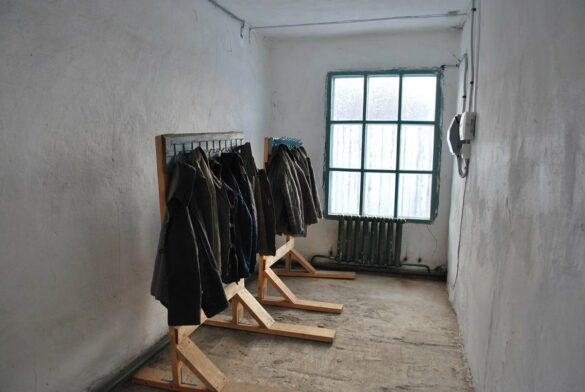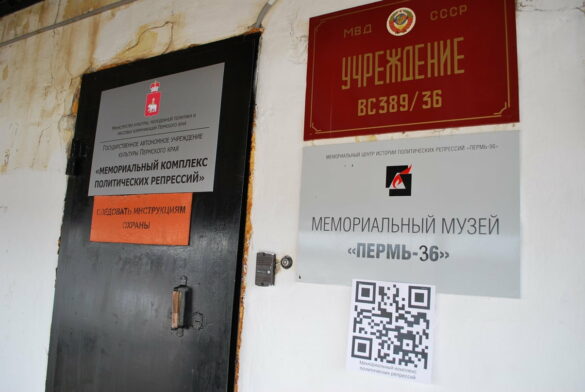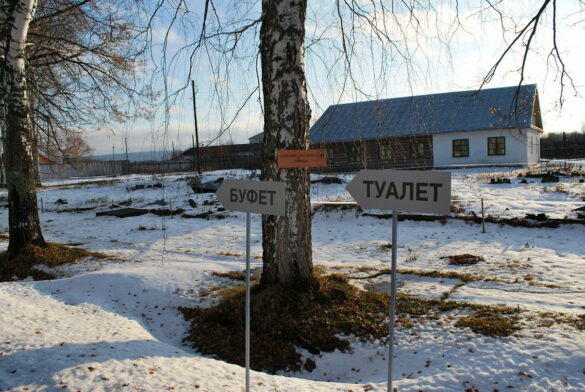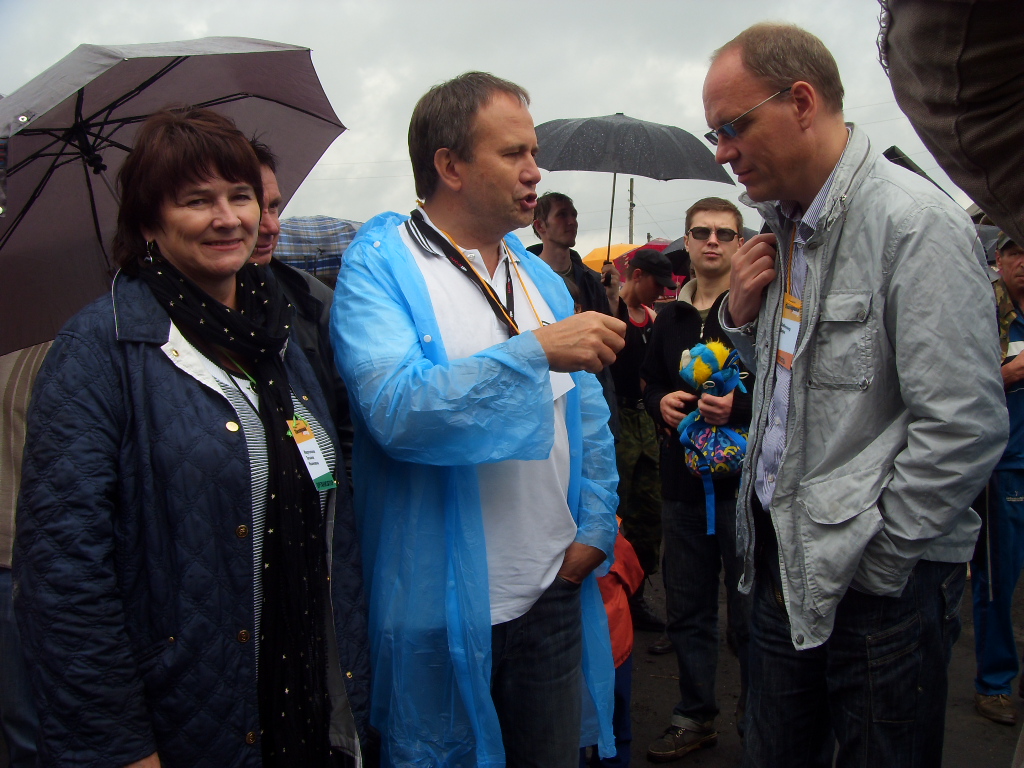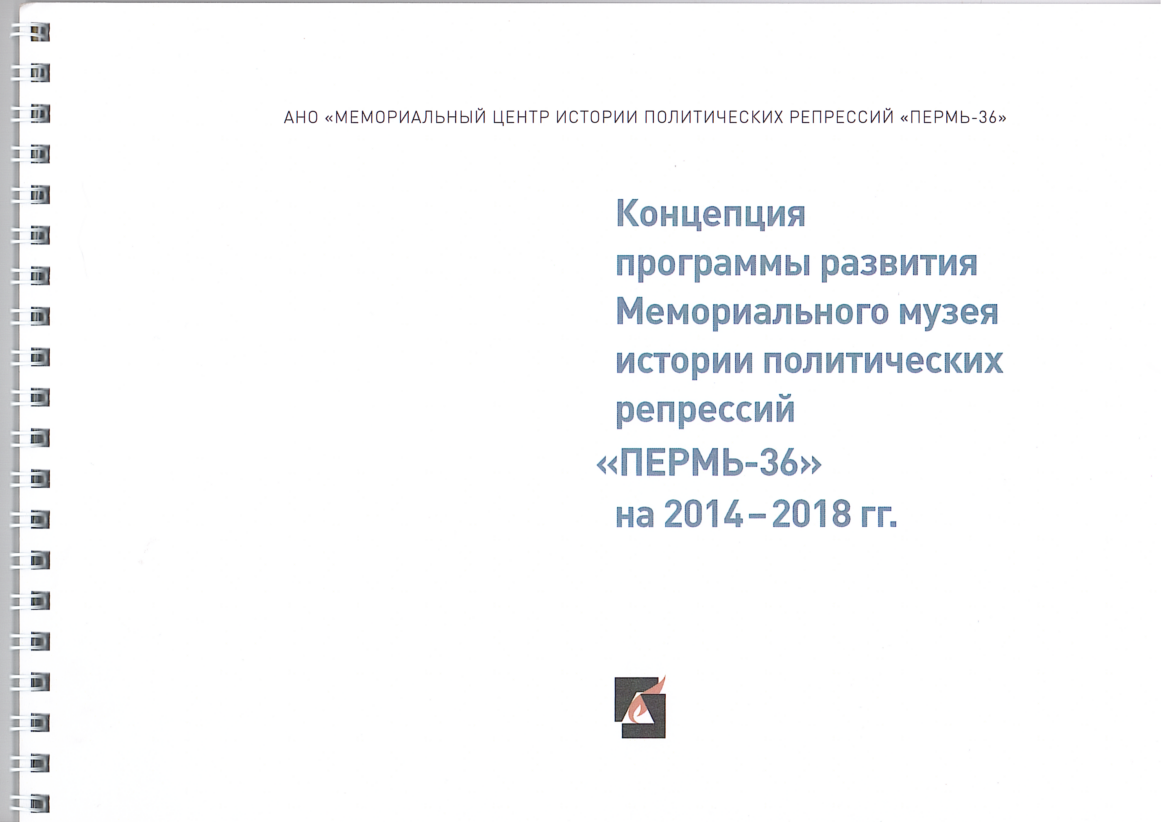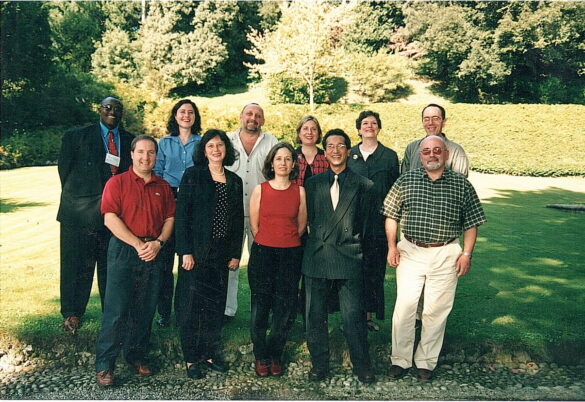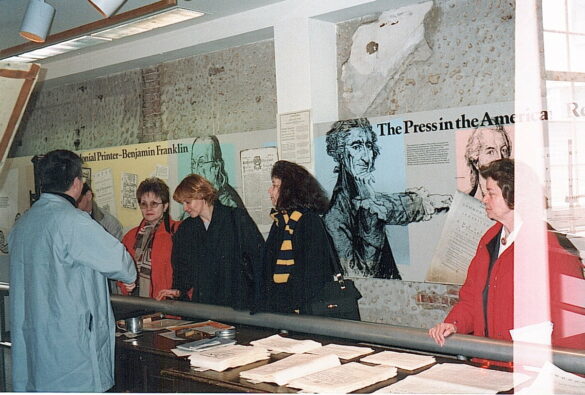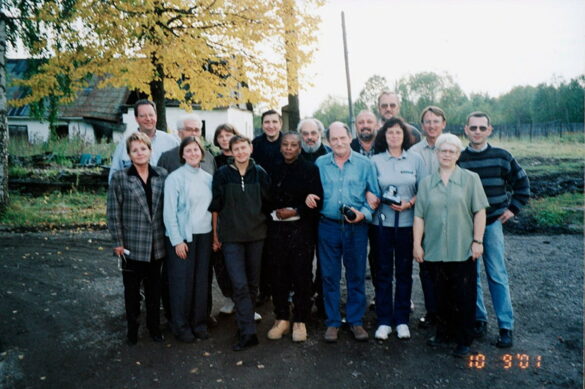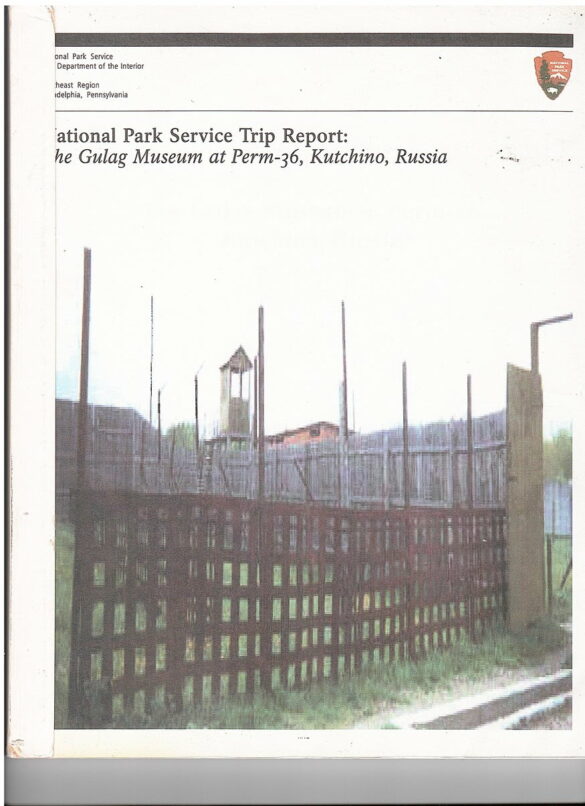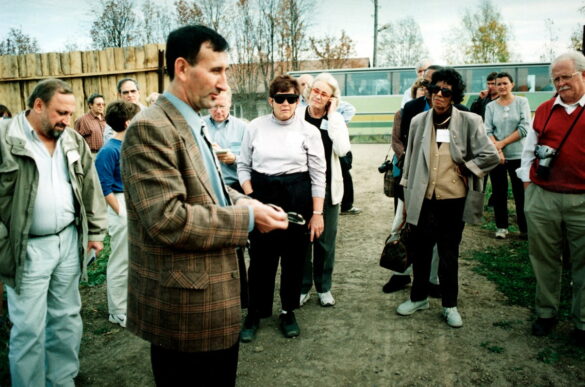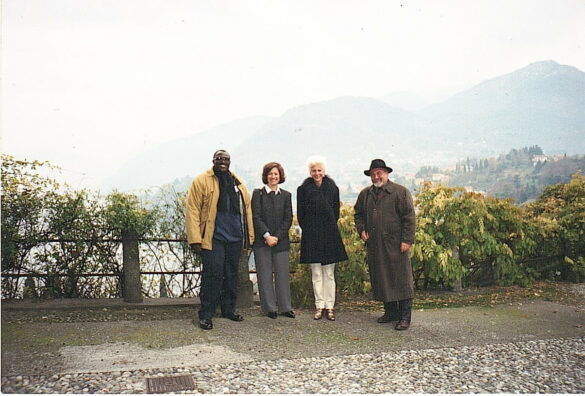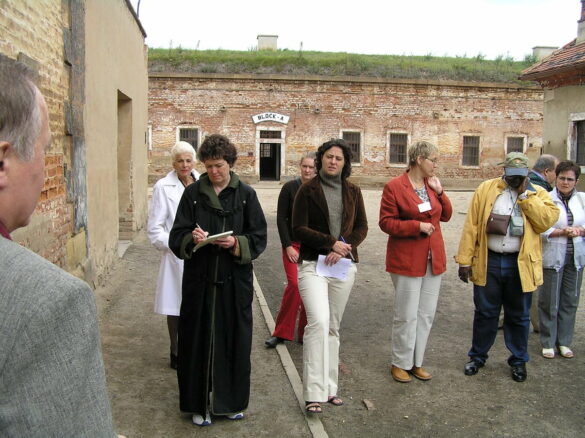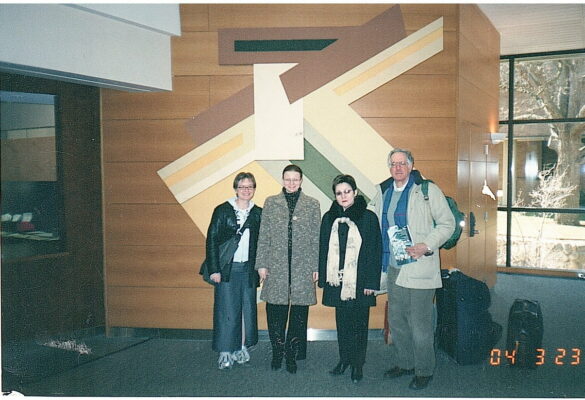On July 12th though July 15th. 1992, by the twentieth anniversary of the first prisoners having been convoyed from Mordovian political camps to the new ones in Perm, the Perm division of Memorial held an academic workshop involving former political prisoners, historians and activists of Memorial, and set up a small exhibit and a commemorative plaque inscribed ‘The last prisoners of the Communist regime were released from here’ which was made up by Rudolf Vedeneyev, Perm artist, dissident and former political prisoner in Perm-35 camp which had been by that time converted into an ordinary criminal camp.
The workshop participants visited the former Perm-36 camp, and had been near Perm-37 which then continued as an ordinary criminal camp and had been fundamentally restructured. The former Perm-36 camp some of the premises whereof was then being used by the psychoneurological care home but most of these were merely abandoned struck with archaism of some of its buildings which were soon found out to be remains of GULAG-era camp site of the 1940s and early 1950s.
Since is was clear from the very beginning that only a few such camp sites survived, decision was made to clarify its historical significance and protect it from further degradation. Very soon the surviving restorable and exhibitable GULAG-rea camp building complex was altogether found out to be the only one in the country.
In the autumn of 1994, the maximum-security area of the former camp was put under restoration and repair; on September 5th, 1995, exactly ten years after Vasil Stus, a Ukrainian poet and dissident died in an isolation ward of this area, the museum and the ‘Dissident Movement in USSR and Perm Political Camps’ exhibition which was set up by the Memorial Center’s staff were opened. The opening was attended by the participants of the Center’s fourth academic workshop.


